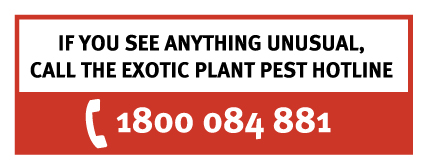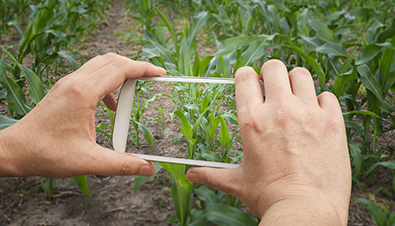Read the latest information on
Foot-and-mouth disease
 Early detection and reporting may prevent or minimise long-term damage to, or quarantine period of, your property, region or the entire industry.
Early detection and reporting may prevent or minimise long-term damage to, or quarantine period of, your property, region or the entire industry.
Report any unusual or suspect plant pest immediately via the Exotic Plant Pest Hotline on 1800 084 881. Calls will be forwarded to an experienced person in your state or territory government, who will ask some questions about what you have seen and may arrange to collect a sample.
Do not send samples without first speaking to someone from the state department, who can discuss the correct type of sample, its packaging, handling and transport to the laboratory assigned for diagnosis.
In some states, the Exotic Plant Pest Hotline operates only during business hours. Outside these hours, leave your full contact information and a brief description of the issue and your call will be followed up as soon as possible. Every report will be taken seriously, checked out and treated confidentially.
If you have found a suspected exotic plant pest, the following general precautions should be taken immediately to contain the pest and protect other parts of your property:
 More information
More informationMore information on reporting plant pests is available from the Plant Health Australia website. It includes a fact sheet that gives some tips on how to take photos using a macro lens attached to mobile phones and other devices, and the phone numbers of state departments of primary industries.